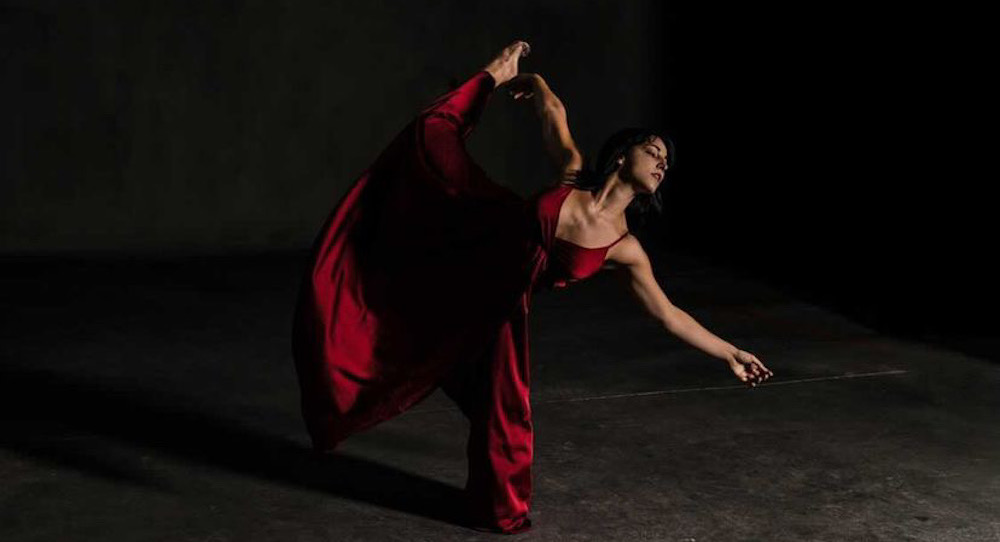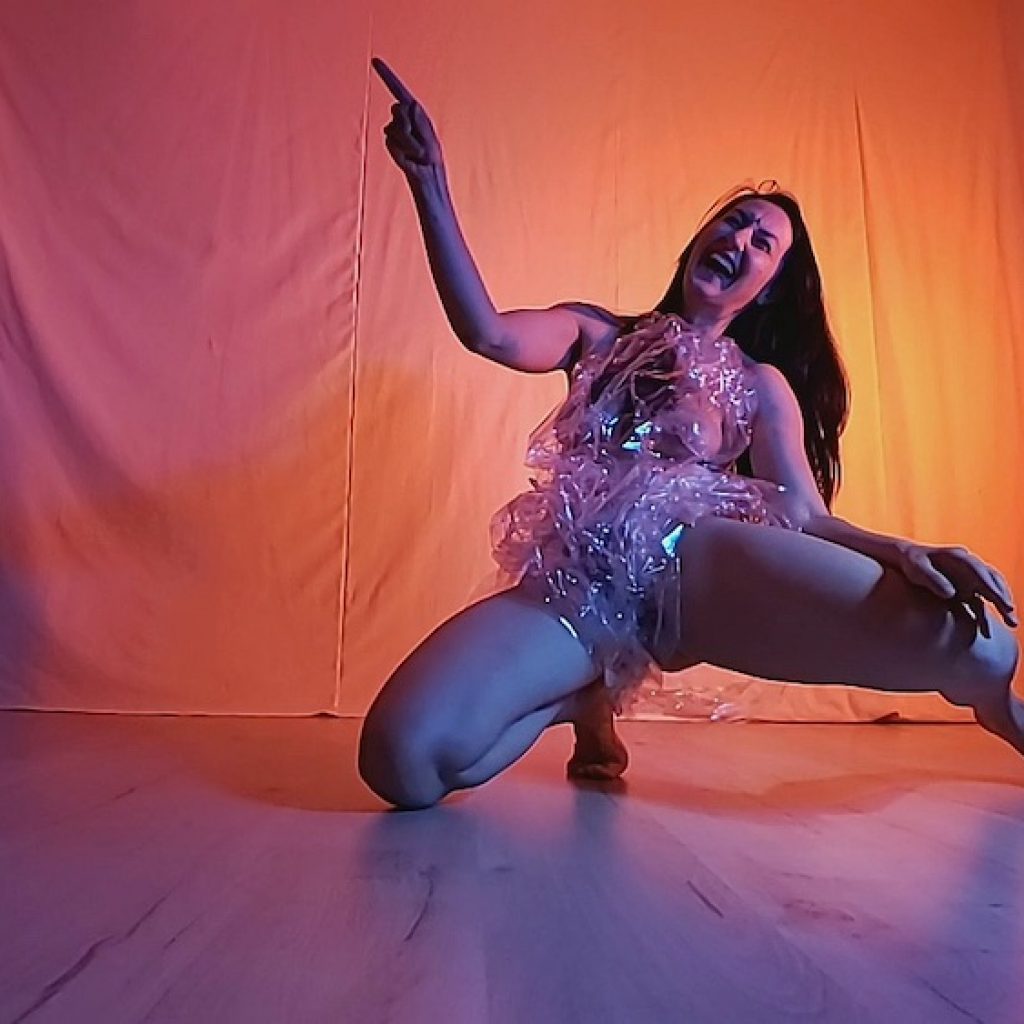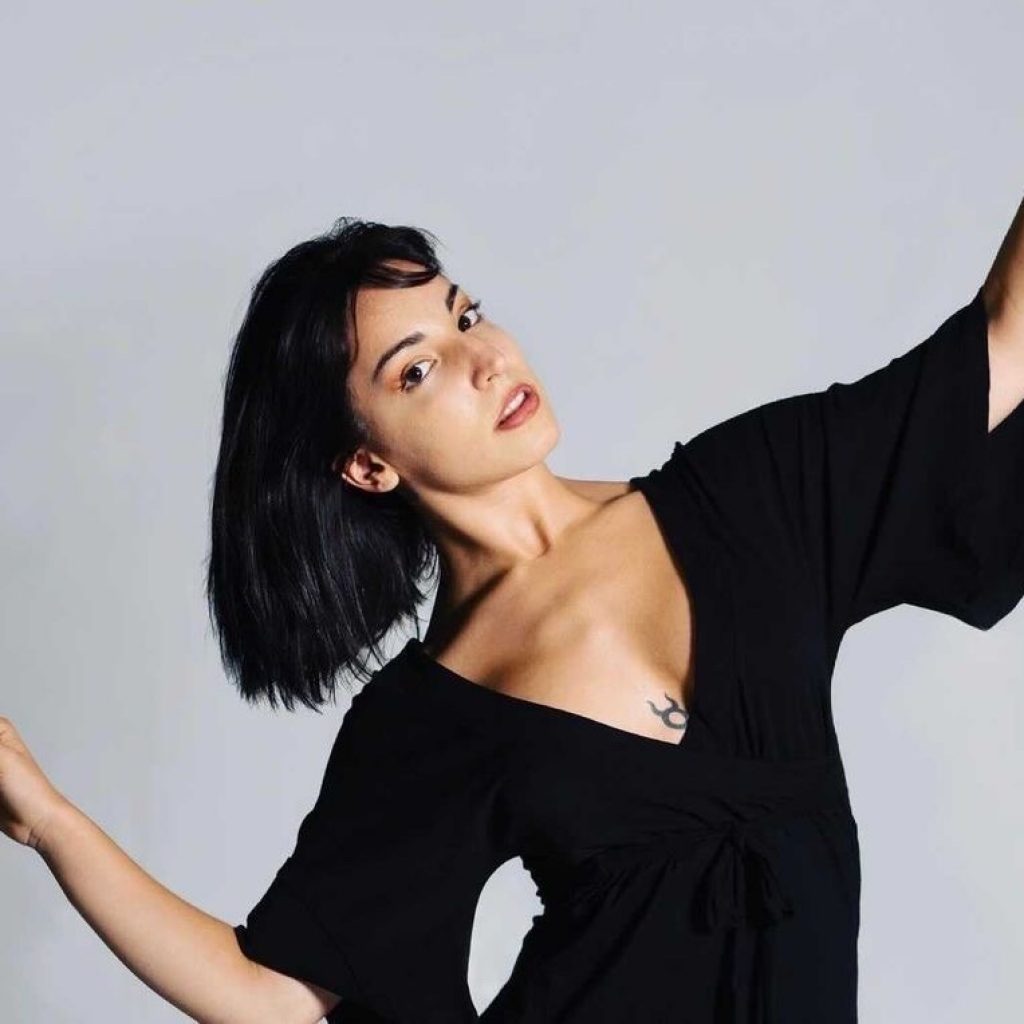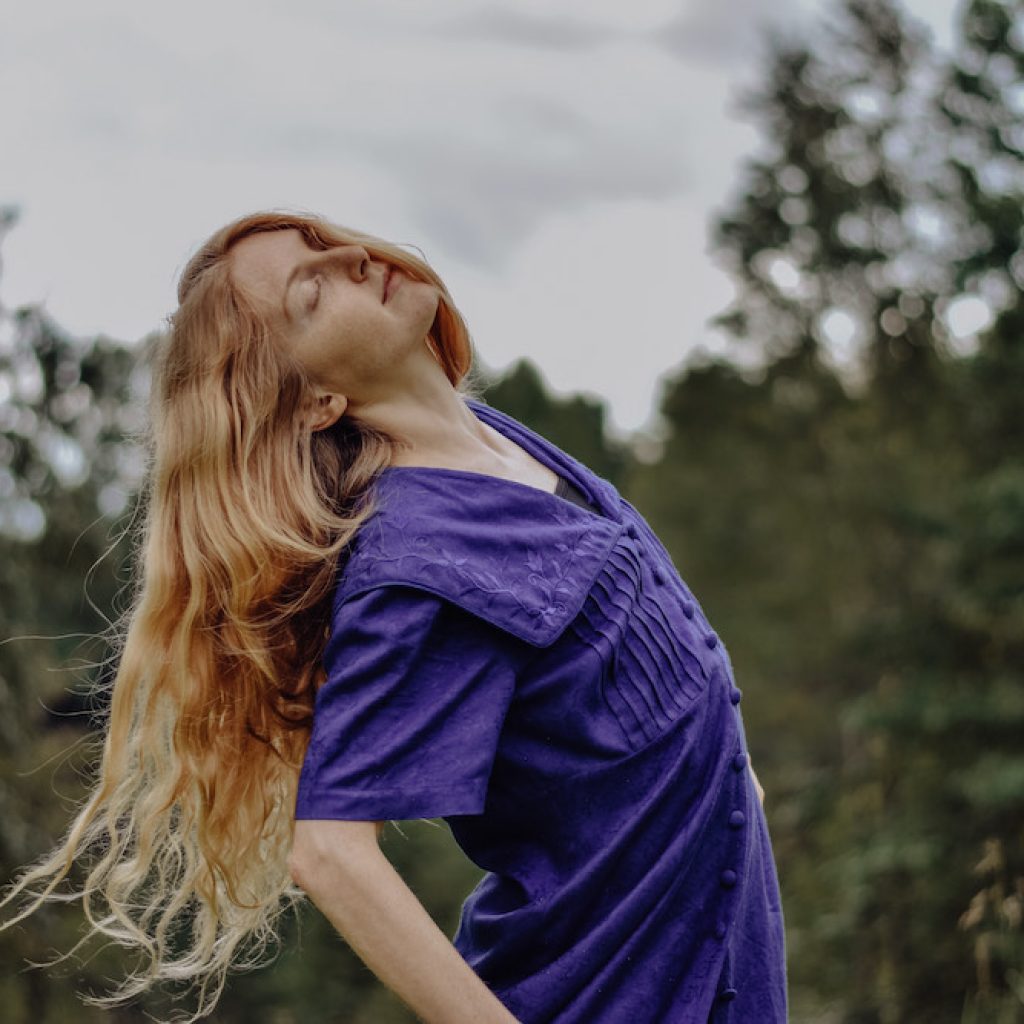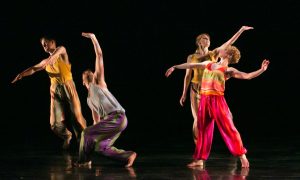Lately, I’ve been thinking about the many possible meanings of the word “improvisation” in relation to dance. On the one hand, improv is improv and you are welcome to do whatever comes to mind/body. On the other, at least in my own improvisation practice, I have noticed that certain improvisatory tasks as well as certain ways of approaching said tasks are likely to yield very different outcomes both experientially and visually.
Dance Informa spoke with a few incredible dancers who dedicate much of their practice to improvisation to learn more about what goes through their mind, body and spirit while they improvise. Below are our best attempts at summarizing the rich conversations we had with Zornitsa Stoyanova, Vasiliki Papapostolou and Megan Castro.
Zornitsa Stoyanova
“I was one of those really late bloomers who discovered dance when I was 15 through some after school dance classes. When I was 18, I went to my very first contact improvisation festival in Budapest, Hungary, which is arguably the European capital of contact improv. There, I studied with many important contact and compositional improvisation teachers as well as one of the pioneers of contact improv, Danny Lepkoff. It was also my first experience dancing with highly professional dancers and technicians who were improvising alongside people who were not trained dancers, which felt really important. That festival made me realize that I wanted to dance. I was living in Bulgaria at the time, and luckily, when I told my parents that I wanted to go to the U.S. to study dance, they were okay with it.
I attended Bennington College, a historic dance school, and I was thrilled to be dancing in the same buildings as legendary American choreographers Martha Graham and Doris Humphrey. At Bennington, I was part of the Emergent Improvisation project by Susan Sgorbati, which was a very different way of looking at improvisation in an ensemble form. We were eight to 12 dancers, and were borrowing behavioral scores from biology. The idea was that in nature, forms emerge, and as dancers, we were trying to let these same forms emerge for us. I also got into compositional improvisation while in college; to me it’s choreography because you set yourself a score and use it as a way of choreographing your space and the duration of the piece.
After graduating from Bennington, I moved to Philadelphia where I started dancing in a large ensemble with Nicole Bindler, was part of improv companies perpetual mvmt<>snd and Graffito Works, and also had the opportunity to learn from Deborah Hay. Deborah’s approach was very different from what I was used to; rather than using the composition tools I had learned, she advocated for a ‘just go’ mentality, a way of finding out what it is while it’s happening. I was initially very skeptical of this method, but throughout the years, I realized that it is an incredibly rigorous practice that advocates for the continuous interrogation of what’s happening in the body. What are we sensing? Where are we in space?
I recently read an article by Peter Pleyer who is a German improviser and teacher I studied with. He talks about how improvisation is not one thing. You can improvise based on what feels good, and that’s really different from trying to make something that makes sense choreographically, which is also very different from improvising in a group. All of the approaches I’ve engaged with live inside me, and I’m constantly switching between them. This variety is a tool for me to keep going in dance and in life. To continuously allow myself to say, ‘Okay, there is something next. It’s okay if I don’t know what it is, but I will discover it.’ I’m still practicing that trust. I’m still scared when I’m lost, but in being lost I keep reengaging with doing and finding the things that I care about.
I started incorporating talking into my movement improvisations naturally, and I practiced it for years before I even noticed that it was a practice. At first, it was a way of socializing without wasting precious studio space time. It was expensive to rent space, but I also wanted to gossip with my fellow dancers and hear what was going on in their lives. After taking a workshop with Jeanine Durning in which we practiced non-stop talking and moving, I started realizing that what I was doing in my warm-ups was part of my overall inquiry in performance. Although I didn’t start naming the practice until around 2020, I’ve long been interested in language and how it connects to theatricality. For a 2016 piece called Explicit Female, I did language-based research which had a lot to do with stories of the body. Words often emerge through the practice of doing, and I find that my thought process is better embodied by this practice than by just speaking or just moving. The idea of ‘yes and’ has been very useful to me as has exploring ways of decomposing language and incorporating recognizable gestures into my work.
In my current practice of improvised dancing and talking –– Brutal Honesty –– I am actively working to not censor myself. The practice so far is not so much stating out loud what I’m censoring but noticing how much of everything I do is a social construct. It makes me question contemporary humanity. I notice reasons for how I became the way I am, and all the performativity my body has learned from being born where I was, experiencing life in a certain way, and being taught that beauty is something to seek. There’s a lot of digging deep into learned normative behaviors. So far, these ideas and themes are not visible through performance. Maybe Brutal Honesty in this form is just a therapeutic movement practice? At present, I am researching how it might evolve into a public performance. My entire career has been centered around improvisation and performance together –– not one or the other. As soon as there is somebody witnessing, it is a performance. When I am working with Brutal Honesty, I am always a witness to myself, playing the role of both performer and audience. The half of me that’s the performer works to figure out what I am allowing to show of myself. That thing might be vulnerability, it might be embodiment, it might be a choreographic concept. In this game of playing both roles, I am always looking for authenticity in the experience of my senses, while illuminating all of me –– my socially constructed personas, archetypes I embody, laundry lists, my fears, my desires –– of this here and now and gone.”
Vasiliki Papapostolou
“I started improvising in 2014/2015, when I started training in contemporary dance. During the initial COVID lockdown in early 2020, I had more time on my hands and I improvised a lot at home –– around an hour a day. It was a very personal thing, and I realized I was trying to cover the gap of physical contact that I felt through dancing. For me, improvisation is about how I feel –– about shapes, textures and musicality. One of the ways I’m working is by trying to instinctively interpret the textures of the music, and I use music I know as well as new, unfamiliar music. Maybe the music suggests something circular or sliding or continuous or sharp, and I try to bring those into the body. It’s not about the movement itself but about the texture.
I usually don’t start with a feeling, but it comes out whether I want it to or not. Improvising on happiness when I’m stressed or anxious, for example, will not bring out happiness. Instead, I see improvisation as a way of experiencing my true self, a way to access what is happening within (which is usually more complex than a word or two). I do sometimes begin an improv with an idea. For a while, I was improvising in heels. With every movement, I was creating a sculpture as opposed to performing a thrown movement, which helped me work on shape. I also went through a jellyfish phase, trying to embody not only the image of it but also the sensation. I don’t see myself from the outside but try to feel it from the inside. Even though I have a mirror, I usually avoid it. You can go deeper by becoming the thing than by looking at it.
I’m also affected a lot by other movement styles outside of contemporary as well as other dancers. I’ll see a video of someone popping or doing Latin, and then I’ll try to capture the essence of the quality and use it in my body as an extra quality to see what it brings to my own movement. I am inspired more by the how than the what, and usually discoveries come later once I’m able to enter the state of flow, which is a mental state where you’re fully immersed in what you’re doing and you stop thinking. Tiredness is a strong part of that, and things deepen through repetition. The more tired I am, the less room for judgment, and the more room for spontaneity. If I say I’m going to do an improvisation to record it, it doesn’t work. My favorite videos of me are when I’ve been improvising for a while. The first things that come up are the things I ‘want to do’ and match what I think the video will look like, but improvisation is much deeper than that. If not, it’s choreography. Improvisation requires the subconscious. You can have an idea of what you want to work on, but not the final thing.
I’ve watched how my improvisations change from day to day as a result of different stimuli I bring into the space either consciously or subconsciously. When I began training in the same place with breakers, for example, my movement was noticeably affected even though I didn’t realize it at first, which further proved to me that improv as a practice is not fixed. You can’t say, a person ‘improvises like that’. Breakers do a lot of threads, for example, and this came into my improvisations without planning. No matter what I’m thinking, there’s always stuff in the unconscious underlying it.
Years of improvising have taught me that at first you have to look bad, and that trying to be good makes you lose the task. Once you explore the task, then you can move forward from there. If you try to make something interesting from the first moment, you aren’t exploring. You’re not even improvising. Improvisation should be a tool to find something new. If you’re scared to look bad, don’t do it. Just do choreography. When you see yourself from the outside or when you record yourself for an outcome, you start choreographing and you lose the sensation. You’re not embodying something. The goal of looking good will make you look like somebody who wants to look good. If you embody a cloud, however, you will look like a cloud.”
Megan Castro
“I started an Instagram movement journal during COVID to help me stay sane and connected. I thought I’d do it for two weeks since that was our initial quarantine time, but obviously that got way extended. I eventually switched from the captions ‘Quarantine Day X’ to ‘Movement Journal No. X’ in order to give myself permission to do it when I wanted to and not be forced to journal every day. There was a period when I thought I never wanted to stop. Now, I’m less certain about that, but I’m also not sure about any specific arrival point –– maybe it’ll fizzle out, maybe not. Even on days when my brain doesn’t feel like improvising, I just start moving and something chemically happens that makes me not want to stop. Whether I post my videos on Instagram or not, I will probably keep it up as a healthy physical and mental practice.
A ‘good’ improv is authentic movement that really feels like it’s coming from me. That’s what’s interesting. Just me being me. When I feel that what I’m doing is bad or get angry about it, I’m too conscious of what’s happening. Too aware and trying to imitate things that are not authentic. When I catch myself doing movements that I think people will like, I have to stop the camera multiple times. Good or badness of an improv session is determined by how my mind was during it –– the quality of the connection between mind and body. For me, improvising is very meditative and feels like a unison of past and present. It allows me to enter a state of flow while still being conscious, and things often bubble up from my subconscious mind.
For my movement journals, I usually dance for about 20 minutes, keeping the camera going the whole time, sometimes stopping once or twice. When I’m done, it feels like when you’ve eaten enough or had enough water and are satisfied. I generally post 10 videos per session of about 30 seconds to one minute each. I also don’t use any music. Initially, I was using music because that’s how it’s ‘supposed to be’; usually dancing without music is seen as a choreographic choice. When watching my improv videos where the music was too quiet or I didn’t have access to music, I found them more interesting because they were less ‘influenced’. I think there is more to be found in ‘silence’. I used to post my videos muted because I thought people would think I was crazy for dancing in silence, but I stopped doing that, and I now find it interesting to hear new things upon watching that I wasn’t conscious of hearing while I was dancing.
I started out by mentioning what inspired me in my captions, which were often ideas of natural forces like wind, water, fire, air, etc. After getting a large response to one video, I decided to go into the actual environment. To dance by water. Dance with the wind. Adding in natural elements allowed me to be immersed rather than having to think such elements into existence. After a period of dancing outside, I noticed that I was losing certain sensations and could see where my body was ‘numb’ or not activated when watching my videos; being in shoes made me lose articulation in my feet and dancing with my hair down limited my neck movement. I decided to start an inside movement journal where I go in right after dancing outside and continue improvising for around 30 minutes. I don’t post the inside videos and usually delete them after around a month, but I’ve noticed that inside is where breakthrough moments often happen. The work is inside, and the performance is outside. Because I don’t plan on posting inside videos, the research is more authentic.
I’m in the mid-500s with my movement journal not counting the official ‘quarantine’ posts, and it’s interesting to look back to my first videos, seeing more of what ‘I learned’ (e.g. Gaga or Countertechnique), but not as much of myself. My movement journals gave me confidence, encouraged me to try more things, opened new pathways and gave me permission to do whatever.”
By Charly Santagado of Dance Informa.


